LSU Health Shreveport Expansion Outlines Bright Future for Students, Region
With the new Center for Medical Education and Emerging Viral Threats more than 75 percent complete and on track to open this fall, students and leaders at LSU Health Shreveport are starting to see the impact the new building will have on them, their careers and health in north Louisiana.
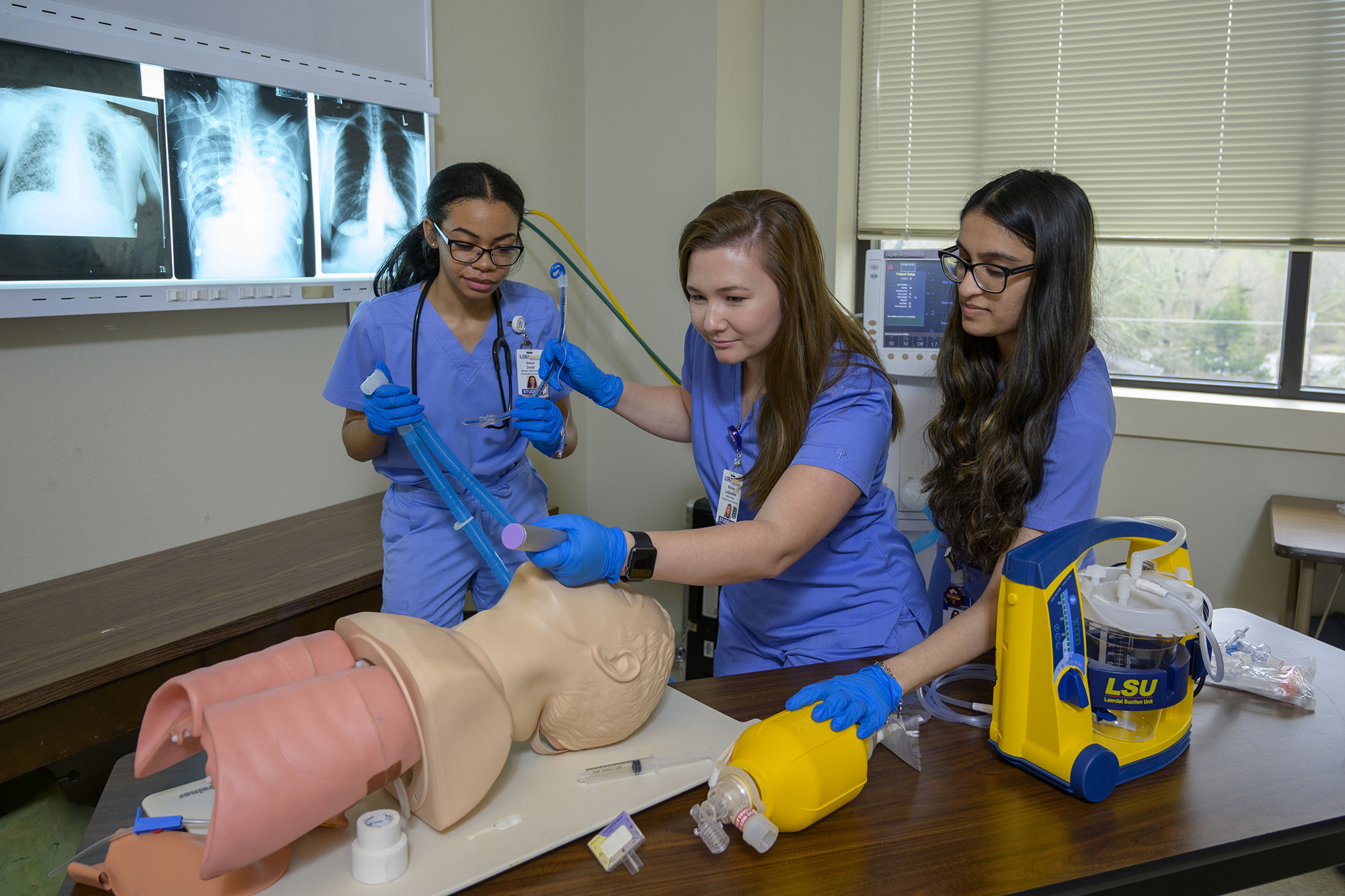
Bailey LeGrande (center) will graduate from the LSUHS School of Allied Health Professions ready to take her board exams as a respiratory therapist. She sees herself staying and working in the Shreveport area.
LSU Health Shreveport student Bailey LeGrande is working toward a bachelor’s degree in cardiopulmonary science. In some ways, she’s a typical LSUHS student, but in other ways she’s one in 35 million. From Lake End, Louisiana near Natchitoches, LeGrande comes from a large family with four brothers and three sisters. Apart from her eldest sister who is a registered nurse, LeGrande is the only one in her family to pursue a career in healthcare. Her motivation to join the medical field came from personal experience. In 2015, LeGrande was diagnosed with an extremely rare blood disorder that changed her life in unexpected ways and put her in and out of clinics throughout high school.
“They told me I’m one in 35 million to have this,” LeGrande said. “That’s what first introduced me to a healthcare setting, the huge need for all kinds of different skills and specialties, and real insight into how the healthcare system is set up—how healthcare workers do their job and how it can be a great workplace where I knew I’d have job security and job satisfaction from helping others.”
LeGrande will graduate from the LSUHS School of Allied Health Professions ready to take her board exams as a respiratory therapist but also with the ability to train on the job to become a cardiac sonographer, also called echocardiographer or “echo tech,” which is an even more specialized field.
“We use ultrasound to image the heart,” LeGrande said. “That’s something I’m focusing on, but I’m also considering a master’s degree to become a perfusionist. That’s the person running the heart-lung bypass machine during open heart surgery.”
Either way, LeGrande sees herself staying and working in the Shreveport area after she graduates.
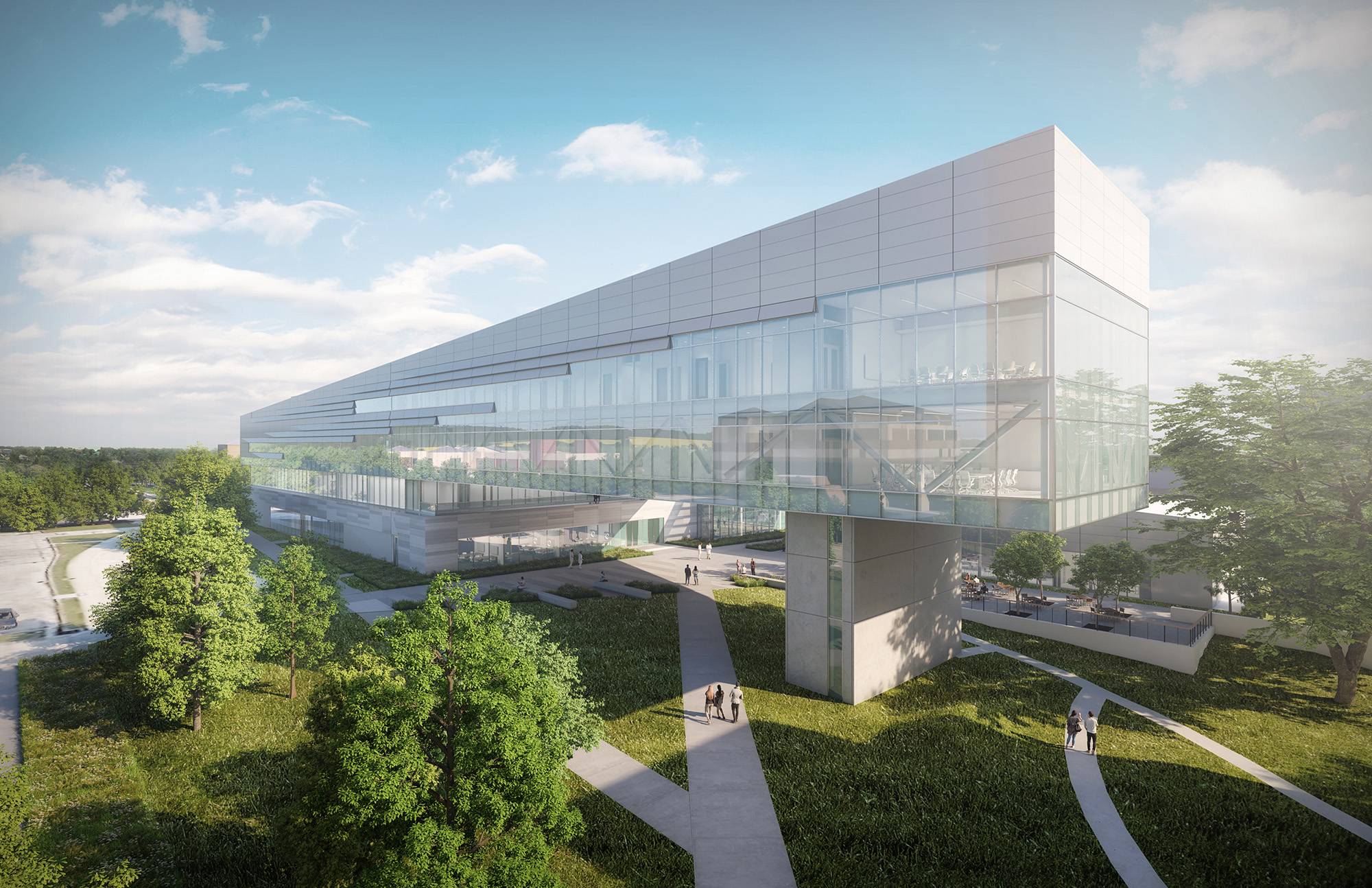
LSU Health Shreveport’s new 155,000-square-foot Center for Medical Education and Emerging Viral Threats is the first new building on the LSUHS campus in more than 15 years.
“I come from a huge family and my grandparents are still living so I want to stay close and be here for them,” LeGrande said. “That’s pretty typical of students from this area, I think. Wanting to take care of your own.”
In this way, LeGrande exemplifies LSUHS’s reasoning in seeking state investment in the new 155,000-square-foot Center for Medical Education and Emerging Viral Threats. LSUHS received $18.7 million in additional support toward completion of the center from the Louisiana legislature last year, as well as $2.1 million to expand and modernize its Gross Anatomy Lab with at least 50 dissection stations, pathology cameras and state-of-the-art ventilation.
“We create our own workforce here in northwest Louisiana—we train, educate and grow our own excellence for this region and for our state,” said LSUHS Vice Chancellor of External Affairs and Chief of Staff Markey Pierre.
The new Center for Medical Education will be the first new building on the LSUHS campus in more than 15 years. It replaces and expands on facilities built in 1970, before cell phones and internet and the emergence of new educational technologies—especially digital and audiovisual, but also accessible and multimodal ones—began placing higher demands on physical structures.
For the first time, students from the School of Medicine, the School of Allied Health Professions and the Graduate School will be learning and training together under one roof.
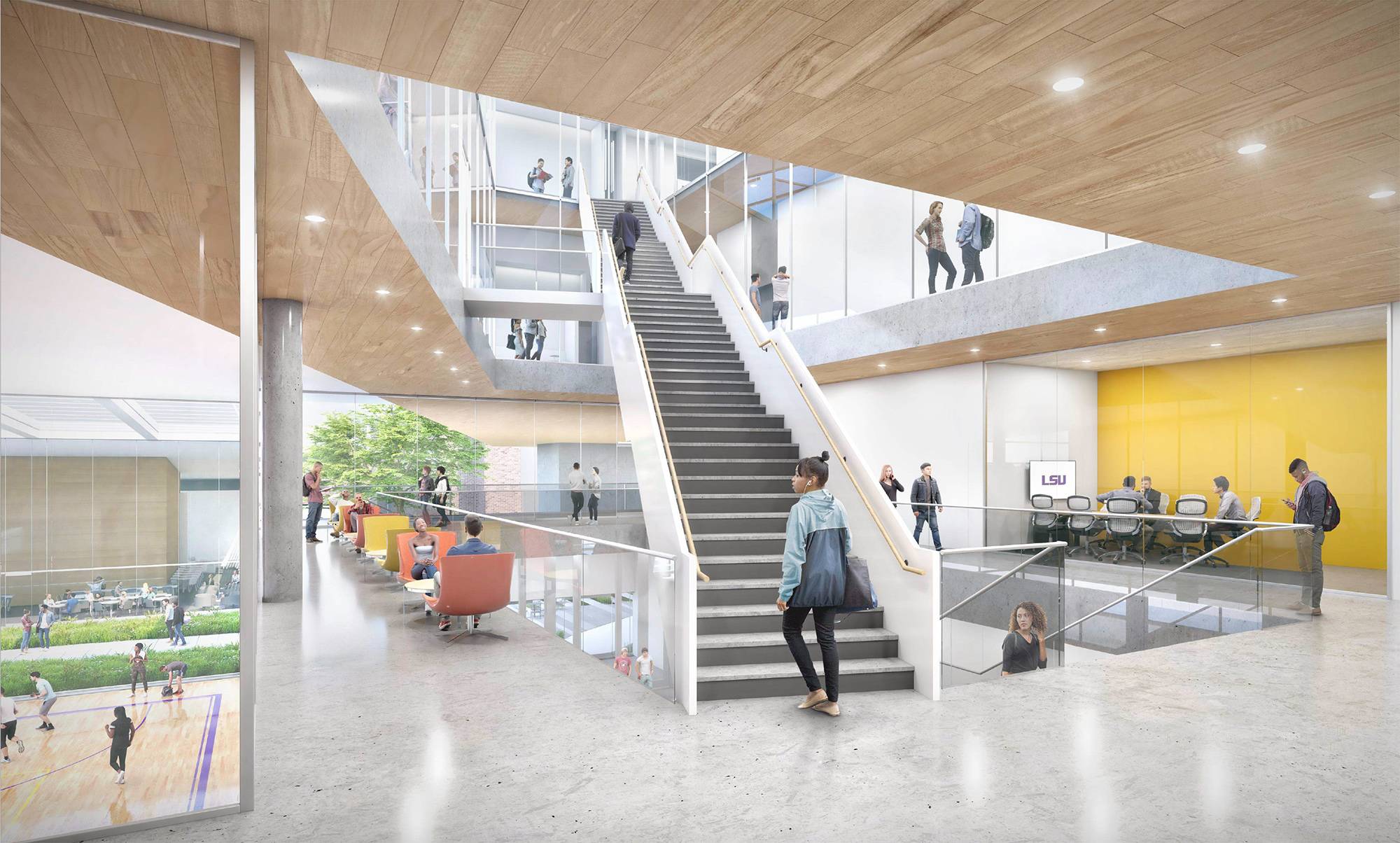
For the first time, students from the LSUHS School of Medicine, the School of Allied Health Professions and the Graduate School will be learning and training together under one roof.
“We’ve been in separate buildings, so we’ve barely seen each other,” LeGrande said. “The new center will allow us to work together in teams, more like in the real world where you have doctors, nurses, techs and therapists working together. I’m especially excited about the new simulation labs that will give students more hands-on experience and ability to communicate and work as a team for more patient-centered care. As a result, whenever someone goes to a hospital in this region years from now, their care is going to be better and more seamless.”
On the medical school side, LSUHS student cohorts have grown incrementally over the past 50 years from 32 to 150. Yet, the homegrown supply of new physicians, with as many as half of all LSUHS medical students going on to practice in Louisiana, still struggles to meet state demands. All but six of the state’s 64 parishes are medically underserved, according to the Louisiana Department of Health.
The classrooms in the new center will be able to accommodate up to 250 while the auditorium can hold 500.
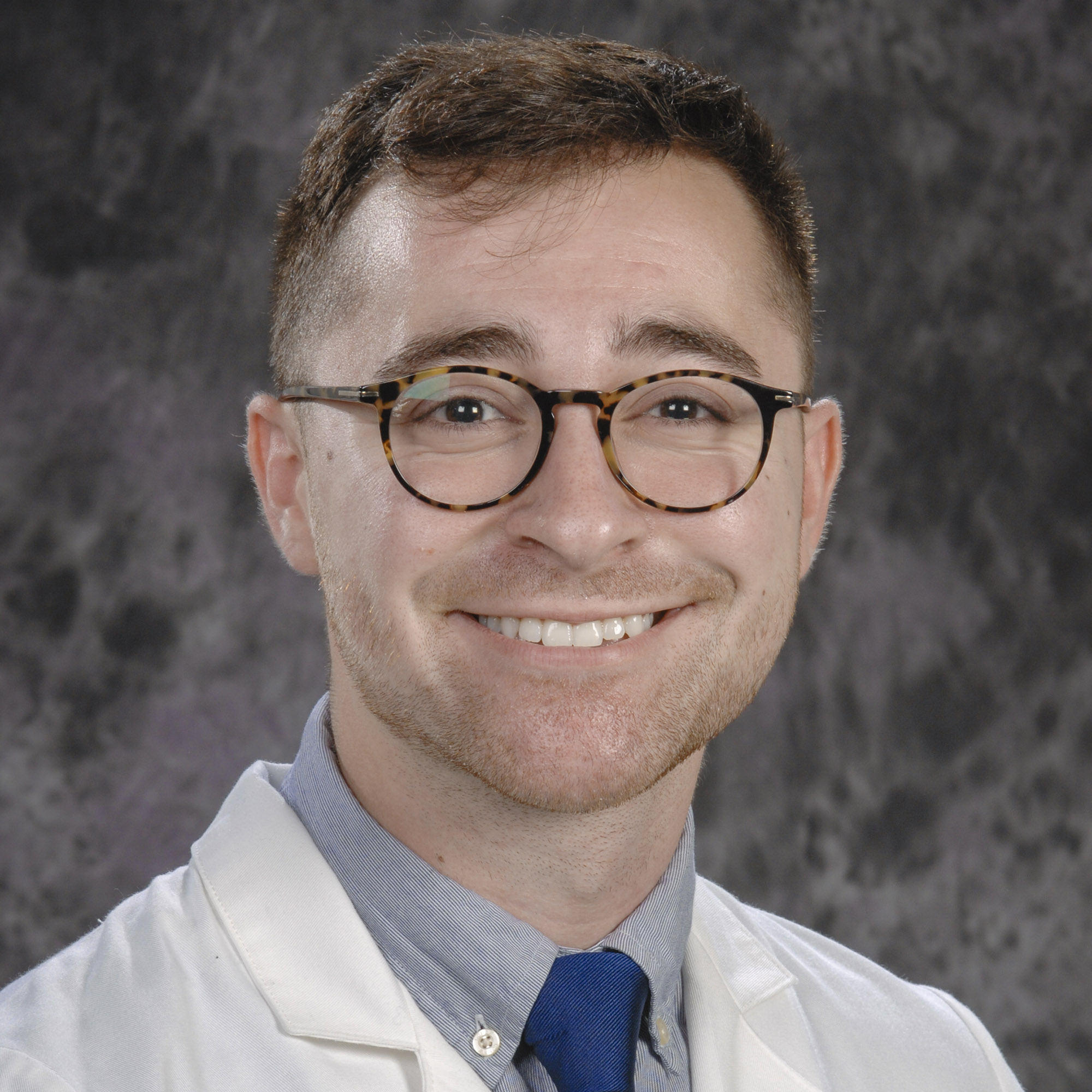
For every new doctor who joins the workforce in Louisiana, there is an additional $2 million in economic impact on the state. LSUHS medical student Amir Kaskas chose to study medicine because of his combined interest in science and research and passion for helping people.
“Our best way to meet Louisiana’s growing needs for care is to educate more healthcare professionals,” Pierre said. “As an example, our fourth-year medical students go through a matching process for residency and what we found is that when you train and do your residency here, 70-75 percent choose to stay in northwest Louisiana because they want to spend the rest of their lives here. This improves the health of our citizens and creates sustainable economic growth for our region.”
For every new doctor who joins the workforce in Louisiana, there is an additional $2 million in economic impact and spinoff effects that lead to the creation of 12 new jobs. While the cost to build the new center amounts to a total of $84 million, the expected growth of LSUHS educational programs and their associated economic impact on the state—enabled by the new center—are estimated to make up for the entire building cost in as little as three years.
Amir Kaskas is in his third year of medical school at LSUHS and the president of the executive council of the medical school student body. He chose to study medicine because of his combined interest in science and research and passion for helping people.
“Medicine is this beautiful intersection of being a people person but working in an evidence-based field,” Kaskas said. “What I love the most about the new center is that it will move us away from lectures to do more team-based learning with increased collaboration within and between classes that normally don’t interact with each other.”
“The culture of the school is really collaborative and kind, and that’s something I think will be more prominently on display in the new space,” Kaskas continued. “It will also serve the region better in improving our readiness for future adverse health events, such as pandemics.”
The new center will have four floors, with the first three dedicated to medical education and the top floor to include the Center for Emerging Vital Threats, or CEVT, and BSL-2 and BSL-3 biosafety labs for the study and diagnosis of pathogens, including potentially hazardous viruses, bacteria, cell cultures, parasites and fungi.
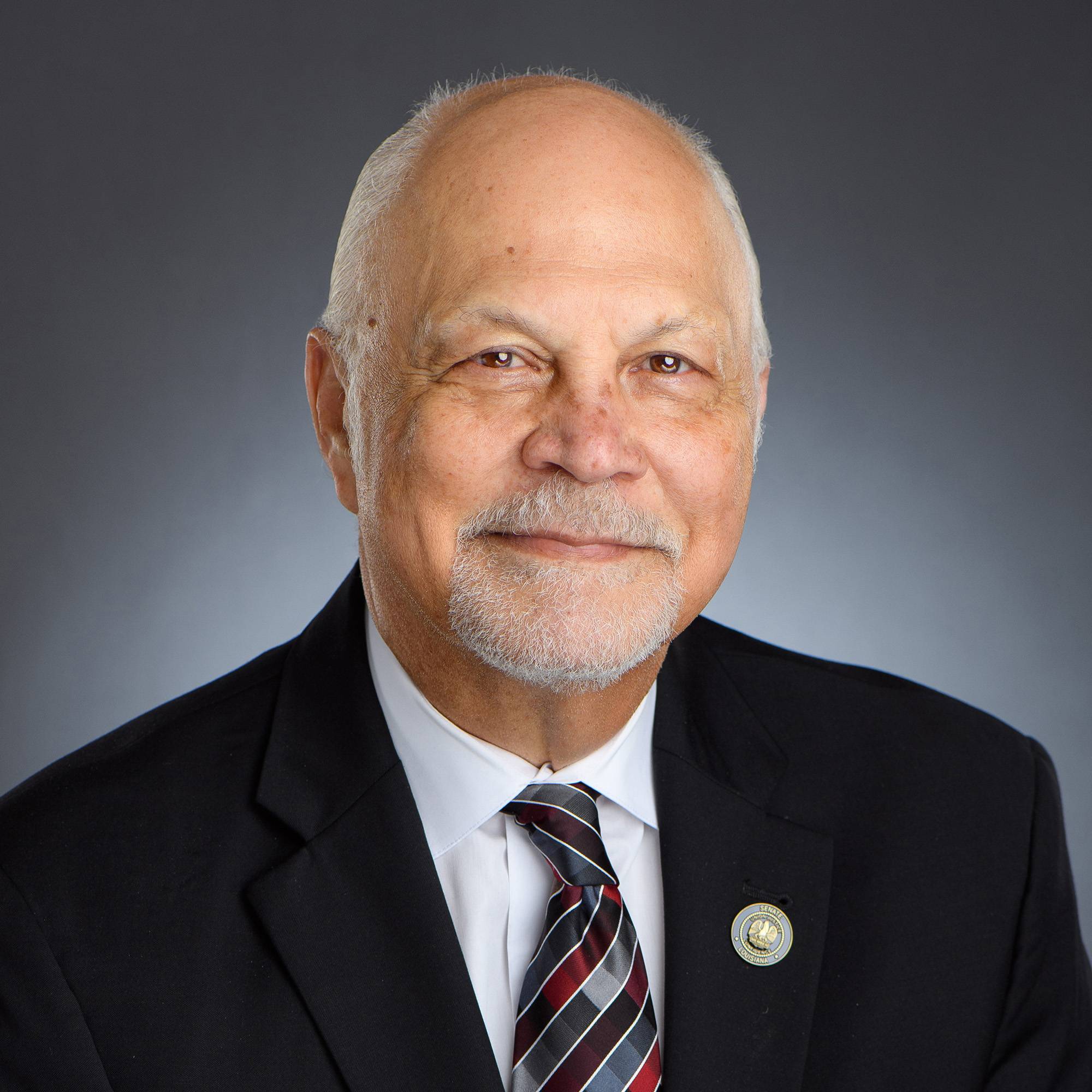
Louisiana Senator Greg Tarver is a longtime champion of LSUHS and an undertaker by profession. “The new Center for Medical Education is the greatest thing that could happen up in Shreveport to improve healthcare for all people in this area—it’s a cherry for North Louisiana,” Tarver said.
The CEVT went from conception to operation in just 12 days in March 2020, at the start of the COVID-19 pandemic, as the state and its hospitals scrambled to get people tested. To date, the CEVT has processed 800K COVID-19 PCR tests, delivered over 130K vaccines and sequenced more than 17K SARS-CoV-2 genomes to track the evolution of the virus that causes the disease. The success of the CEVT, bolstered by the promise of a new home on the LSUHS campus, has increased the university’s competitiveness for large federal grants. Most recently, LSUHS received $10.5 million from the National Institutes of Health to establish a Center of Biomedical Research Excellence, or COBRE, for applied immunology and pathological processes under the leadership of Andrew Yurochko, the CEVT director. The grant confirms LSUHS’s rapid rise as a national leader in the diagnosis, testing and treatment of new viruses and other pathogens.
“LSU Health Shreveport has been instrumental in getting Louisiana and the country through the pandemic,” said Louisiana Senator Greg Tarver, who is a longtime champion of LSUHS and an undertaker by profession. “We’re so fortunate to have it up here. It’s a cherry for North Louisiana. It drives economic development for this entire region, and I’ve seen it.”
“The new Center for Medical Education is the greatest thing that could happen up in Shreveport to improve healthcare for all people in this area,” Tarver continued. “People live longer here because of the LSU medical school. Educating and training doctors is good for the health and safety of everyone in our state.”
LSU is the primary source of new physicians in Louisiana, which has three medical schools. LSU Health Shreveport graduates 150 doctors each year while New Orleans School of Medicine graduates 200 and Tulane University School of Medicine graduates 190. Two out of every three physicians in Louisiana are LSU alumni.


